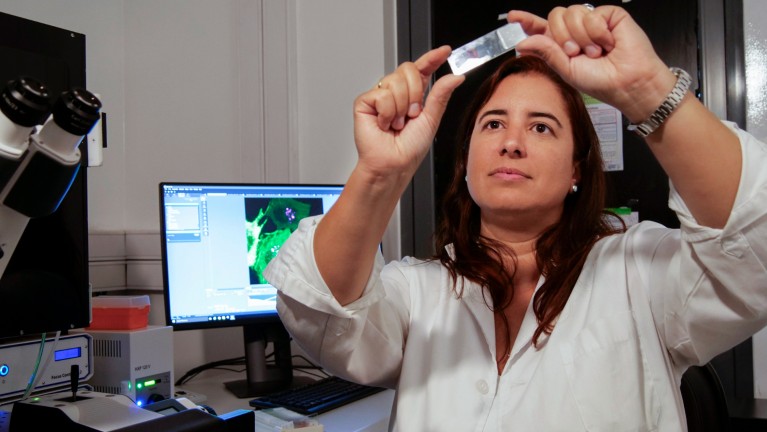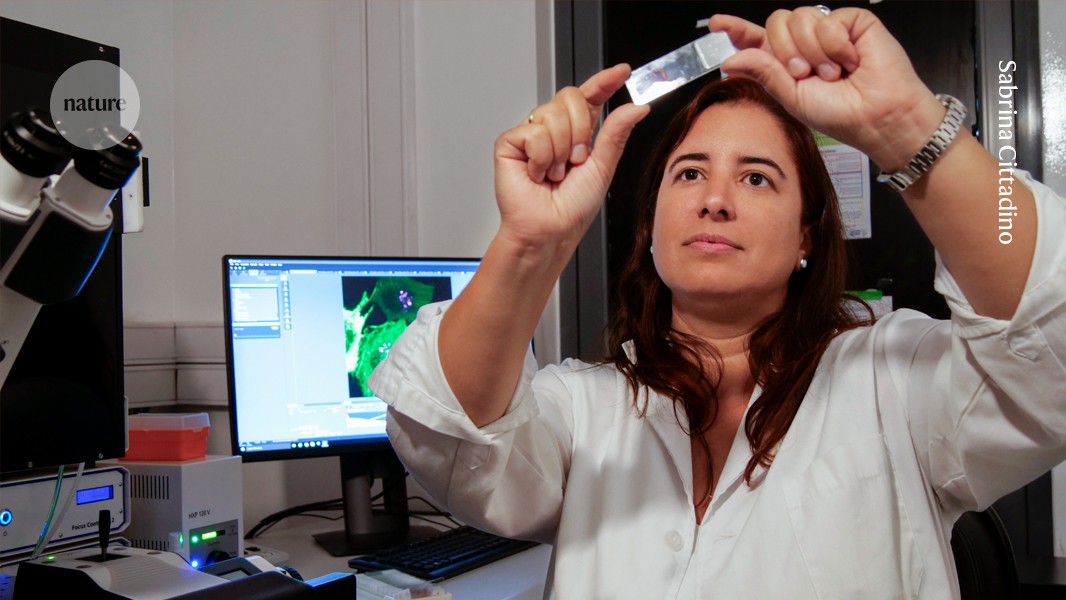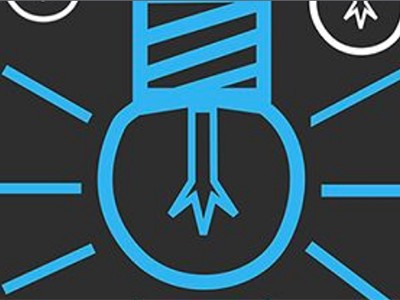
As manager of the microscopy service at Uruguay’s Advanced Bioimaging Unit, Marcela Díaz has been able to develop her twin passions for teaching and microscopy.Credit: Sabrina Cittadino
Since its establishment in 2021, Latin America Bioimaging (LABI) has significantly advanced the bioimaging community across the region. With 545 members from 31 countries, LABI aims to promote the development of this discipline in South and Central America. A key contributor to this progress is the Advanced Bioimaging Unit (UBA), founded in Uruguay in 2020 with support from the Chan Zuckerberg Initiative (CZI).
Although Uruguay has only a modest research community — its 2,241 PhD-level scientists represent 0.06% of its population of 3.4 million — it has emerged as a bioimaging leader in the region. The UBA serves approximately 140 researchers annually, offering unrestricted access to state-of-the-art optical microscopy technologies and expertise.
As a biologist transitioning into the role of an imaging scientist, my career path has been far from linear. It began during my master’s studies in neuroscience, while I was simultaneously working at a microscopy facility and teaching human physiology at a medical school. These experiences helped me to discover my dual passion for teaching and microscopy, although it took time to work out how to merge these interests.
Nature collection: Mentoring
Today, I manage the UBA’s microscopy service. This role demands a diverse skill set, encompassing social skills, financial management, equipment and service coordination, and pedagogy — training researchers to use microscopes and design experiments — not to mention in-depth knowledge of the advanced microscopy techniques themselves.
This position has provided the supportive environment I needed to shape my career. Collaborating with colleagues across Latin America revealed the demand for bioimaging education and training in the region. Many challenges persist, including the need for accessible microscopy training; a shortage of experienced trainers; and the limited time and resources available to develop tailored teaching materials.
With the guidance of my mentors — Leonel Malacrida (head of the UBA) and Claire Brown (director of the Advanced BioImaging Facility at McGill University in Montreal, Canada) — I developed a strategic plan to transition from trainee to trainer, achieving this within a year.
If you’re considering a career as an imaging scientist managing a facility and focusing on microscopy training, here’s how I did it.
Training
Becoming an imaging scientist requires proactive effort, combining relevant upskilling courses, interdisciplinary experience and job shadowing at established microscopy core facilities. Financial support from bioimaging networks such as Global Bioimaging (GBI), LABI and the CZI makes these activities more accessible. Through this support, I had the opportunity to participate in several training programmes, including the Montreal Light Microscopy Course Fundamentals, train-the-trainer (MLMC-TtT), developed by Claire Brown. This transformative programme is designed to create a multiplier effect by preparing trainers who, in turn, train more users, thereby efficiently expanding microscopy knowledge.
Such programmes were instrumental in shaping my career path. They not only deepened my understanding of my role at the UBA but also strengthened my resolve to address the shortage of experienced trainers in Latin America capable of teaching specialized microscopy skills.
Teach others
In 2024, with the encouragement and support of my mentors, I developed a new training course on the fundamentals of optical microscopy. Launched in April 2024, Curso de Fundamentos en Microscopía Óptica (CFMO) was specifically designed for the Latin American microscopy community and is set to become a cornerstone of microscopy education in Uruguay. The response was overwhelming, with more than 100 applications from students and microscopy enthusiasts across the region, highlighting the demand for such training. Ultimately, we selected 17 participants, including postgraduate and undergraduate students, postdoctoral researchers, university professors and regular UBA users.
How to plug the female mentoring gap in Latin American science
To ensure the course’s success, I also mentored members of the UBA team, preparing them to assist with teaching the course content and leading hands-on activities. CFMO complements other training initiatives that my colleagues and I at the UBA have developed, such as the Annual Workshop in Advanced Microscopy and Biophotonics, which has trained hundreds of scientists across Latin America.



